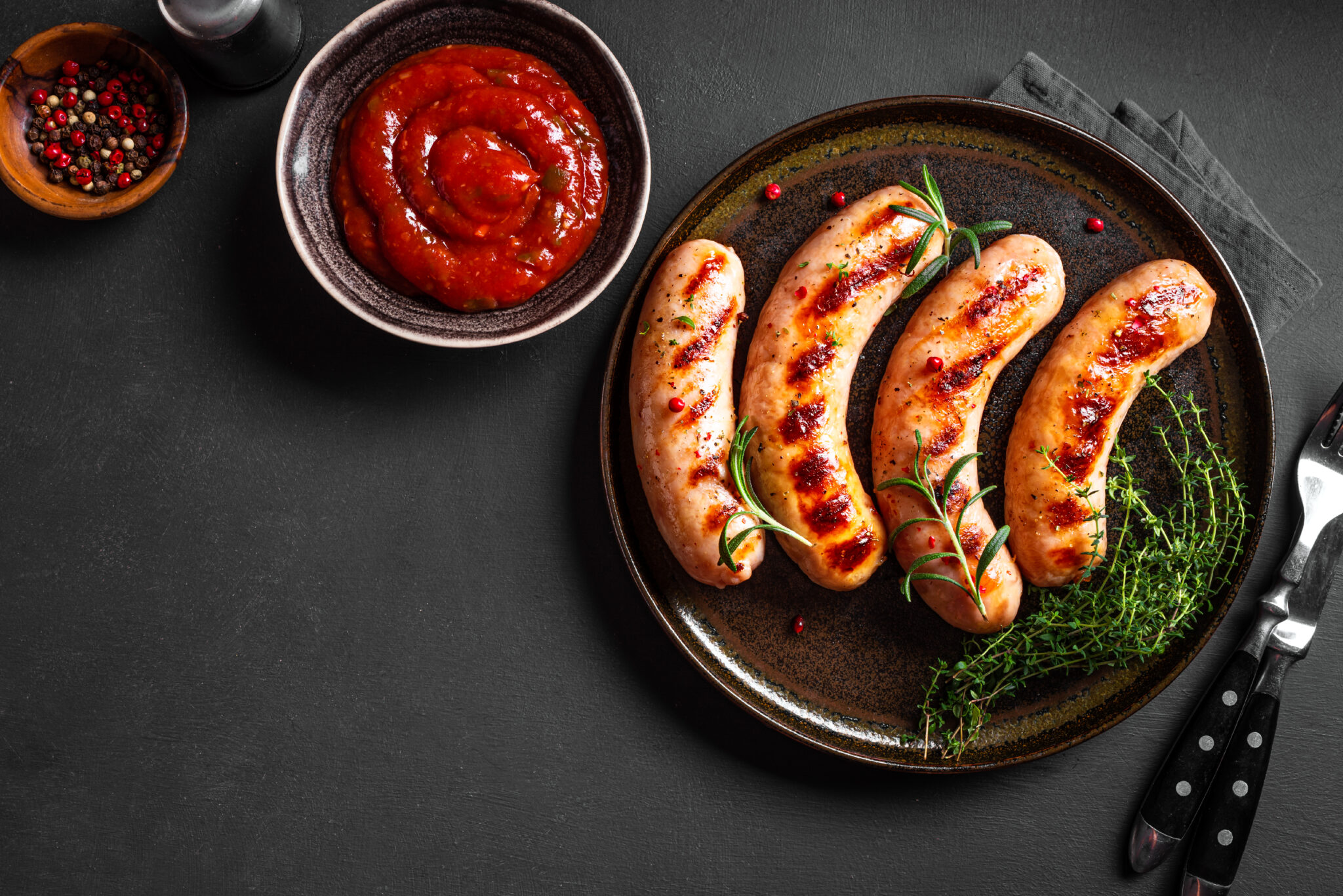I’ve been thumbing through a cookery book by Jonathan Meades, better known as a writer and film-maker on architecture rather than food. As its title suggests, <em>The Plagiarist in the Kitchen</em> is not your everyday cookbook. Its subtitle is “a lifetime’s culinary thefts”, and the author’s principal contention is that “anyone who claims to have invented a dish is delusional, dishonestly contributing to the myth of culinary originality”.
Here, then, are my three plagiarist dishes that Mr Meades failed to include in his collection, all of which involve England's beloved sausage:
<strong>Sausages braised with fennel, lemon and potatoes</strong>
Finding a proper butcher who makes proper sausages will be a good start. A third-generation butcher down the road from me has a fine selection of bangers, and his garlic sausages are perfect for this.
You’ll need eight decent-sized sausages for four people; along with about four tablespoons of olive oil, a small and thinly sliced onion, a couple of fat but thinly sliced cloves of garlic, a sliced bulb of fennel, the zest and juice of a lemon, a couple of tablespoons of chopped parsley and a couple of bay leaves, about 750 grams of small new potatoes, and, if possible, a glass of pastis. Failing the pastis, substitute a glass of white wine.
Pre-heat your oven to gas mark 4/180° fan. Heat one tablespoon of oil in a suitable, ideally cast iron casserole dish and fry the sausages until they are browned all over. Set them aside. Add some more oil, along with the onion, garlic and fennel, and fry until soft.
Add the potatoes (halve them if they are not that small), the lemon juice and zest, bay leaves, half the parsley and the pastis. Add the remaining olive oil, cover tightly and consign to the oven for about 45 minutes.
Check halfway through that the casserole is not getting too dry, and add a little water if necessary. Sprinkle with the remaining parsley before serving without further accompaniment.
<strong>Sausages with cider</strong>
When I purchased the garlic sausages, I couldn’t help but notice a pile of pork-and-apple sausages nearby, which reminded me of this old stalwart – I first tasted it in a presbytery in the mid-1970s. Any decent pork sausage would do, but if you can lay hands on apple-flavoured ones, so much the better.
As before, eight sausages will amply feed four people. In addition, you’ll need a couple of eating apples and the same of small banana shallots, two fat and finely chopped cloves of garlic, some fresh sage and parsley, salt, pepper and a couple of tablespoons of plain flour, and finally half a pint of good dry cider. If a bottle of calvados is available, then have it ready, but don’t lose any sleep if it is empty.
Pre-heat the oven to gas mark 4/180° fan. Put the flour in a suitable dish and season with salt and pepper. Roll the sausages in the flour and then gently fry in a frying pan, using some suitable light oil – rapeseed is very good.
Meanwhile, slice the apples, discarding the core but keeping the skin, and chop the shallots and garlic. When the sausages are lightly browned, place half of them in the base of a cast-iron casserole, add a layer of apple, shallot and garlic, then another layer of sausage, and finally a last layer of apple.
Sprinkle some chopped herbs as you go, season with a touch of salt and pepper, and finally add the cider. Bring it all to a gentle simmer on the hob, then cover and cook in the oven for one hour.
It is ready when the sausages are thoroughly cooked, and the apple, shallots and garlic have combined with the cider to make a delectable apple sauce. If any calvados is available, stir in a little to finish. Serve with new potatoes and some spring greens.
<strong>Sausage sauce for pasta</strong>
You’ll need about four well-flavoured pork sausages for four people, a medium onion, a stick of celery, some garlic, a small red chilli, some suitable herbs, such as “Italian herb seasoning”, available in all good supermarkets, and a tin of chopped tomatoes.
Chop the onion, celery and garlic and fry gently in olive oil, adding just a pinch of herbs to begin with. Cut open the sausage skins and drop the meat into the pan in small lumps. Using a wooden spoon, break it up even more and combine with the onion.
Carefully chop the red chilli very finely – with or without the seeds, depending on how fiery you like it – and add to the pan. (Don’t forget to wash your hands afterwards, or you’ll regret it.) Add the chopped tomatoes, and then season to taste with salt, pepper and more herbs.
If a drop of wine is lingering in the bottom of a bottle, liberate it into the pan and cook gently for 40 minutes or so, until you have a cohesive pork and tomato sauce.
Bring a large pan of salted water to the boil, and then cook sufficient pasta of your choice until <em>al dente</em>. Drain the pasta and then add to the sauce, combining well. Serve with Parmesan, of course!
<strong><strong>This article originally appeared in the May 2024 issue of the <em>Catholic Herald</em>. To subscribe to our award-winning, thought-provoking magazine and have independent and high-calibre counter-cultural Catholic journalism delivered to your door anywhere in the world click</strong> <mark style="background-color:rgba(0, 0, 0, 0)" class="has-inline-color has-vivid-cyan-blue-color"><a href="https://catholicherald.co.uk/subscribe/?swcfpc=1">h</a></mark><a href="https://catholicherald.co.uk/subscribe/?swcfpc=1"><mark style="background-color:rgba(0, 0, 0, 0)" class="has-inline-color has-vivid-cyan-blue-color">ere</mark></a>.</strong>



